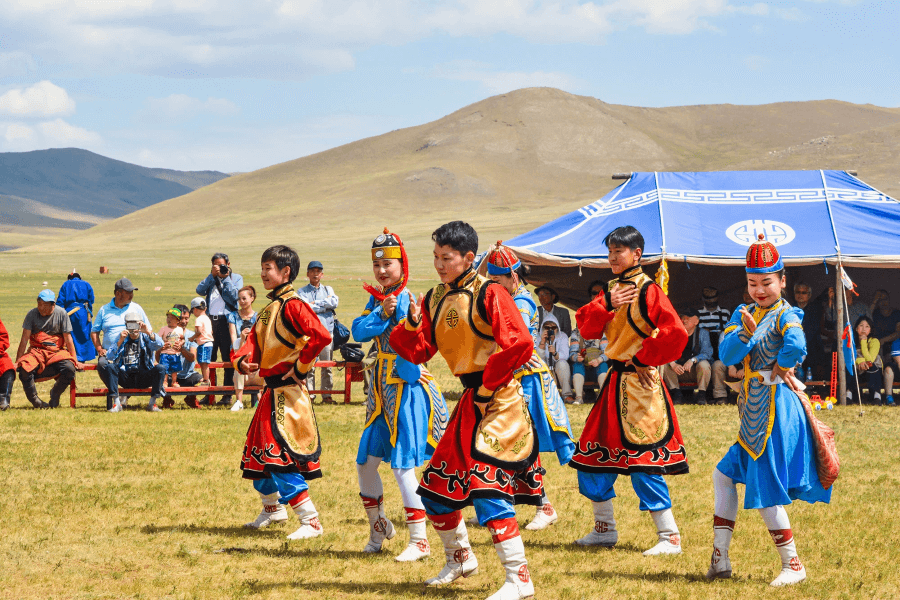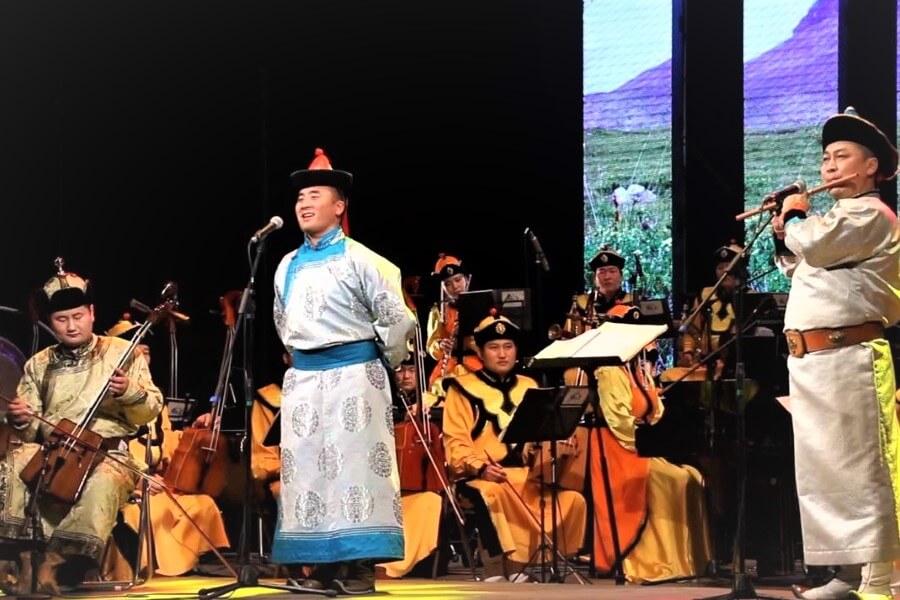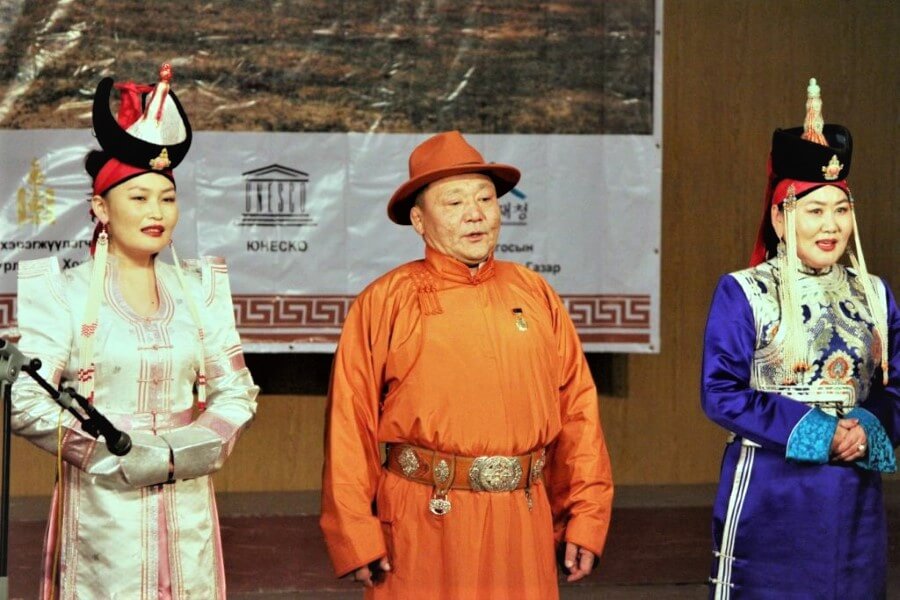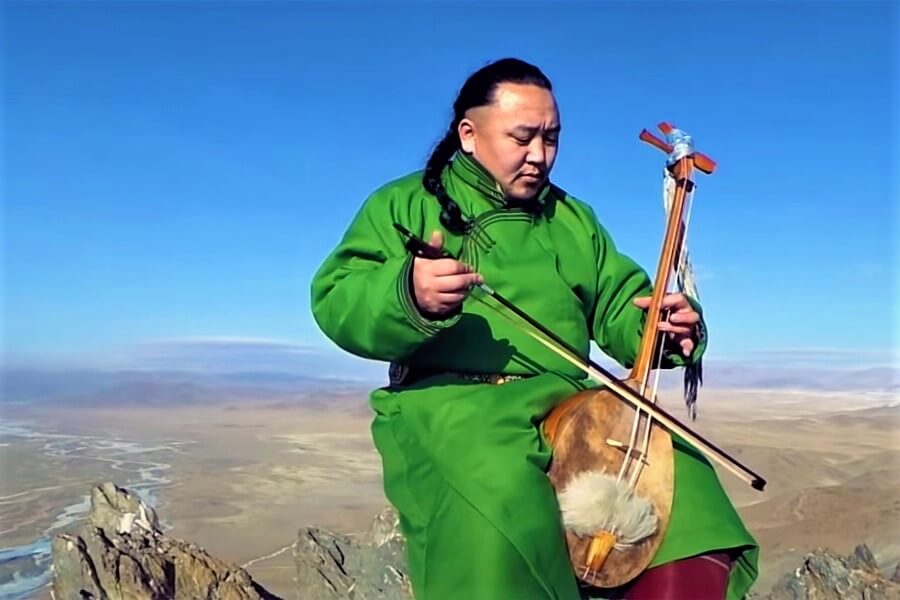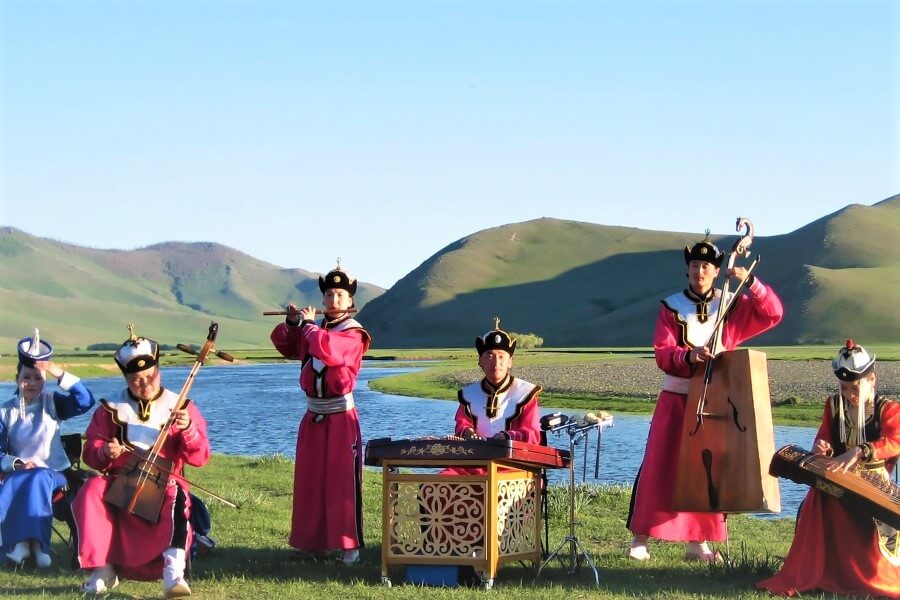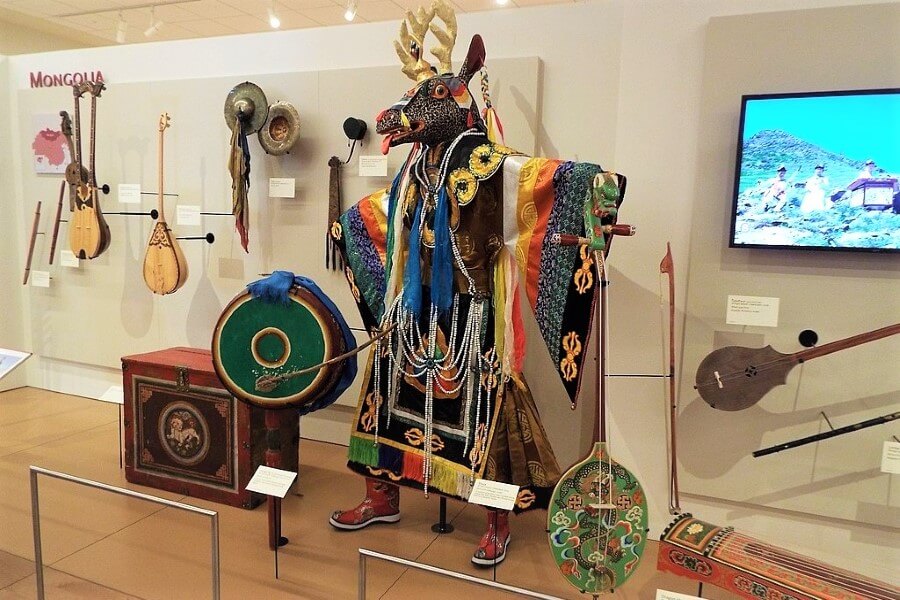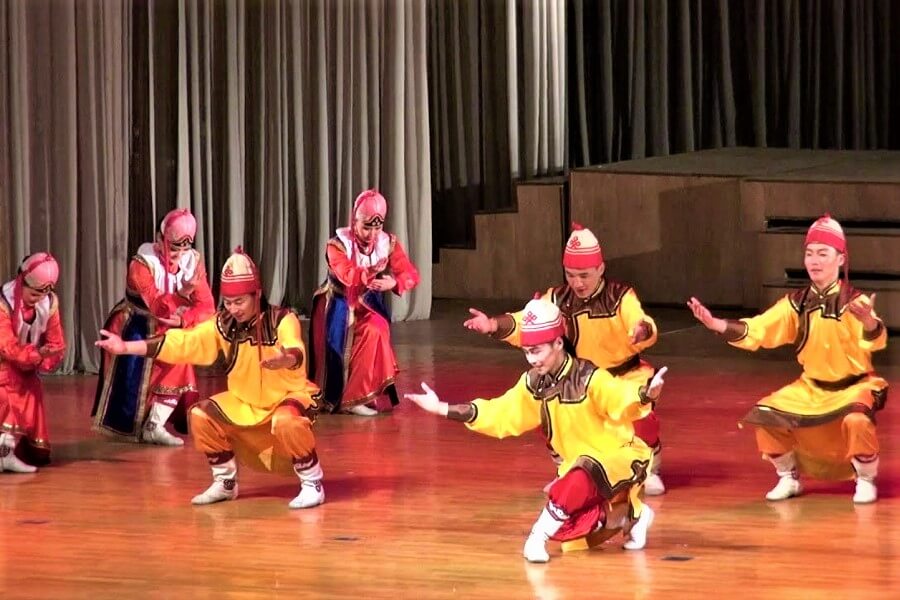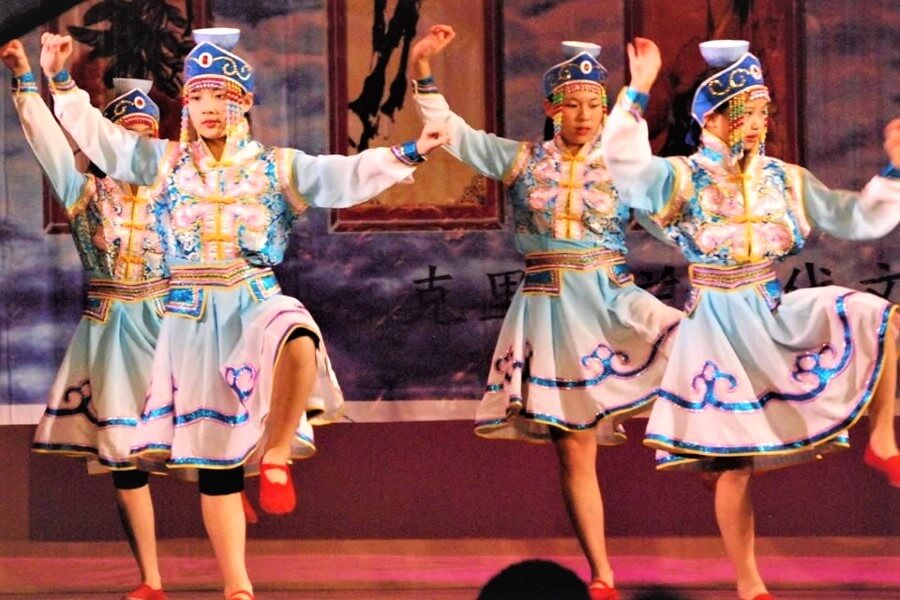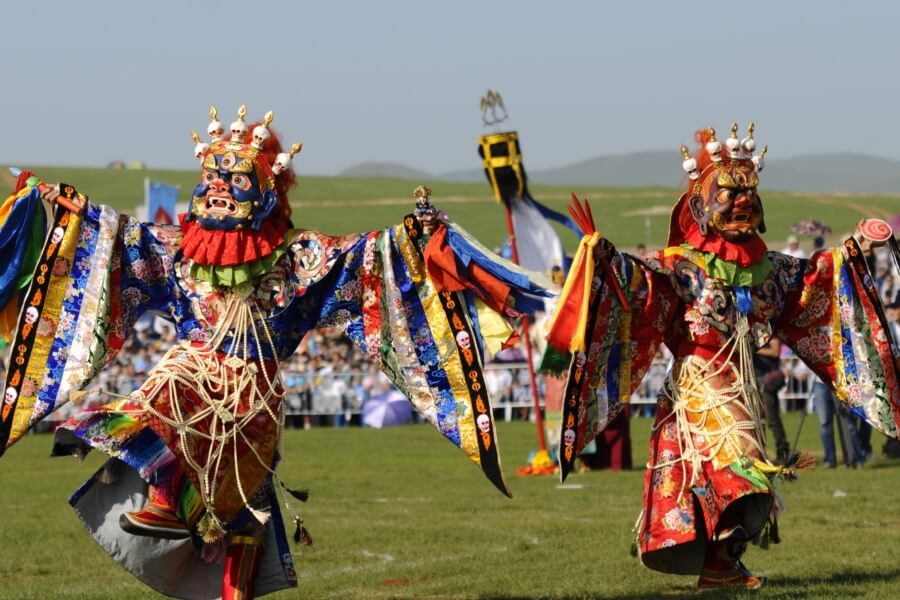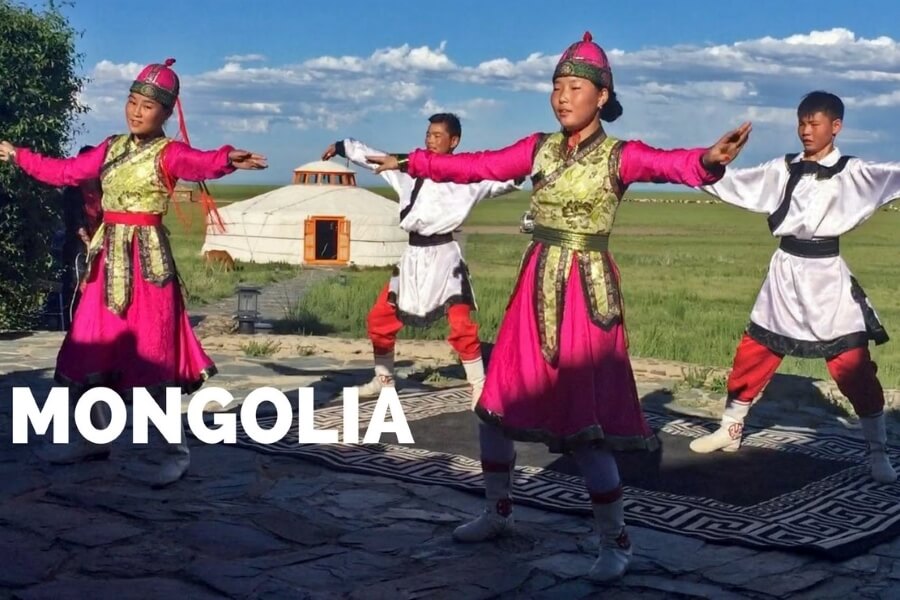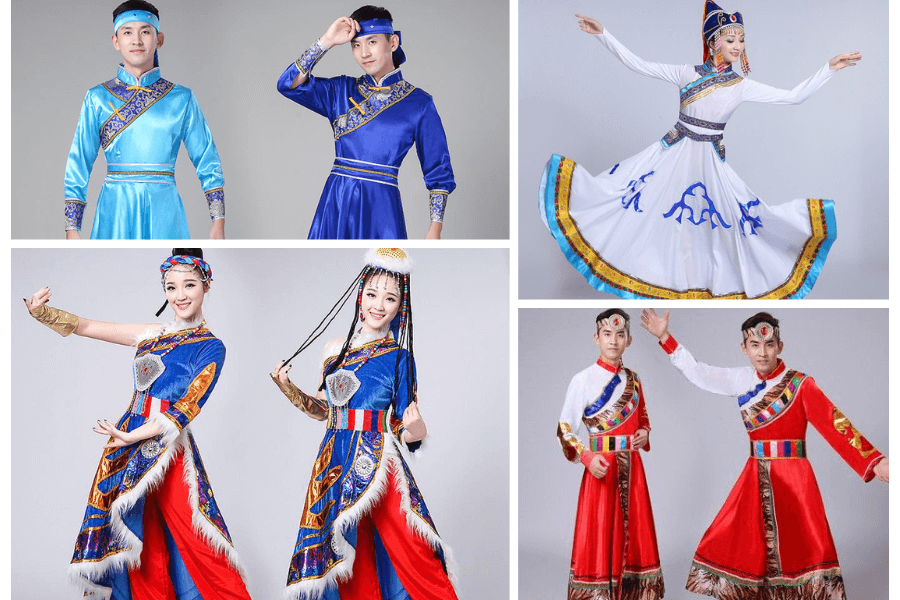Mongolian Traditional Dances and musics is an integral part of culture and life of Mongolian people. Mongolian folk music has a deep root in the history. Mongolian Traditional Dances and Music history are associated with the nomadic life, it represents for their unique culture. The major topics of traditional Mongolian music are horses and steppes. For instance, long and short songs have played an important role in the history of Mongolian traditional dances and musics. Mongolian musical masterpieces created specifically for a specific musical instrument, such as Morin Huur (Horse-headed fiddle).
Mongolia is a country with the biggest empire in human history. Genghis Khan and his sons governed a territory stretching from China to Europe in the 13th century. There was a popular proverb in Mongolian history: "A Mongol born on a horse and dies on a horse." On their horses, they conquered the world twice and founded the largest Empire both times. Mongolia has a population of roughly 2.5 million people, the majority of whom are Buddhists. They reside in a land with vast, endless steppes.
Mongolian Cultural/Folk Music and History
Folk and traditional music is an important aspect of Mongolian culture and existence, and its folk music has a profound history, geography of steppes, and daily tribal life with horses. Mongolians are made up of various ethnic groups, including Oirats, Hotogoids, Tuvans, Darhad, Buryats, Tsaatan, Dariganga, Uzemchins, Barga, Kazakhs, and Khalha with unique costumes that showcase their ethnicity. There are 4 most well known traditional music types in Mongolia.
Several musical intrument shows will be specially tailor-made in Mongolia tours that truly a fantastic hand-on experience during the trip.
Long Songs
This type is known as "Long song" (Urtyn Duu) because each syllable of lyric is stretched out for a long period of time." A four-minute song might only have ten words.
This form of folk music is accompanied with nomadic living and large steps. Long songs are believed to be the Mongolia's oldest tunes. The objective behind this form of folk music is to lengthen the pronunciation of vowels for a long period of time. Perhaps a four-minute song only have ten words. It represents the nomadic existence of the steppe in a melancholy way. The songs can contain a wide range of topics, from love to philosophical thoughts. People in the east of Mongolia mainly play it with morin khuur, and some other ethnic groups play it with igil (both instruments are fiddle style instrument).
One of the most remarkable example of the long song is one used by herders to assist a mother camel. The mother camel may occasionally stop providing milk for her baby. When this happens, herders sing the Ingen Temeenii Duu, a song that makes the camel cry. The crying stimulates fluid production in its body, and the mother camel resumes milk production for the baby camel.
UNESCO designated the Mongolian Long Song as part of the Oral and Intangible Heritage of Humanity in 2005. But don't take their word for it. Visit and experience a show for yourself. You will undoubtedly be blown away. Seeing these songs performed will provoke strong emotions while simultaneously impressing you with the musicians' technical ability.
Short Songs
A short-song is a generic term for songs with a simple structure that anyone can sing.
This type of folk music is newer than Long song. It has more fun and it is livelier and also easier to perform, often humorous in character. Its themes are love, the home country, horses, and women. Technically less trying than the long song, it is still a significant part of everyday’s Mongol life.
The short song is usually performed accompanied by small groups of traditional music instruments, folk short-songs are popularly sung in the densely inhabited settlements in Mongolia, where they are called ‘khüree duu’ (city songs). Their extensive ornamentation and exquisite melody set them apart from other genres.
The melody of the Mongolian short song is pleasant and easy to learn. Folk short-songs, which have been passed down from history to the present day, can strike a deep chord in one's heart. With their melody and words, they have the ability to calm anybody who listens to them. The Mongolian traditional short-song is a unique component of global folklore, reflecting the nomadic livestock-breeders lifestyle and the picturesque splendor of Mongolian nature.
Throat Singing (Overtone singing)
This special type of singing involves the production of two distinct audible pitches, including a low note and higher melodic notes, at the same time.
Throat singing is the most distinctive and well-known feature of Mongolian traditional dances and musics around the world. It started in the south-west of Mongolia, but over time, it expanded throughout the country among all ethnic groups. It has various branches and techniques. Khoomii or hoomi is the most well-known kind of this folk music. The basic goal is to generate two separate audible pitches at the same time. There is one lower pedal tone and one higher melody note.
This form of singing is regarded as more of an instrument. Khoomii is associated with shamanism and is distinguished by the production of sounds that mimic those of nature; for example, the soothing roar of wind cascades and rivers, as well as bird songs. Throat singing is practiced in other countries as well, but Mongolia is the richest and most active in this genre of music.
Magtaal (Praising Songs)
This genre of folk music is still thriving and well known. It is a poetic praise devoted to various circumstances. From a strong wrestler to scared mountains or even a horse's victories.
Magtaal (Ode) is another type of music that has stayed important part of Mongol life. It is a lyrical praise, an epic-like hymn with shamastic poetry origins. It is performed at all key occasions in nomadic life, and is devoted to the scared mountains, a great wrestler, or a victorious horse. No naadam worth its name would be complete without a magtaal.
Magtaal are songs sung in honor of Lamaism's gods and spirits of nature, heralds, or specific animals. Epic literature also include songs of praise for the mountains, rivers, and nature in general. This is an ancient ritual that is still performed by tribes in Western Mongolia's Mongol-Altai region.
Mongolian Traditional Musical Instruments
Mongolian traditional instruments include string, wind, and percussion instruments." Mongolians have made instruments out of metal, stone, bamboo, leather, and wood throughout history.
Mongolian traditional instruments are wonderful. Morin khuur, a fiddle music instrument, is the most well-known. It has two strings and is a Mongolian symbol. Horsehead fiddle is another name for it. Some believe that it was initially a shamanistic instrument. Other important instruments in Mongolian folk music include shants (three strung lute), khuuchir, igil (both bowed instruments), everburee (a folk oboe), khel khuur (Jew's harp), and many more.
Mongolian Traidtional Folk Musics is one of the most valuable site of Mongolia. Although it has changed and improved, Mongolian Musics still retains the quintessence of Mongolian musical art.
Mongolian Traditional Dance and History
Mongolian traditional dances began as a ritual performance imitating the movement and manner of deities, mystical creatures, and legendary heroes. Shamanist perception of the surrounding world and worshipping of Mother Nature influenced the style of ancient dancing, as well as the shape and pattern of clothing and accessories. The great variety of folk dancing has been enriched by clans, tribes, and generations of performers with distinctive costumes and shoes representing the culture of Mongolia. Following are 4 types of cultural dances that every visitor should watch.
The Mongol Biyelgee
Biyelgee, Mongolian Traditional Folk Dance, is performed with the accompaniment of Mongolian traditional musical instruments such as the morin khuur (horseheaded fiddle) and yochin. Dancers from several ethnic groups perform Biyelgee in Mongolia's Khovd and Uvs provinces. Biyelgee dances incorporate and derive from the nomadic way of life and are regarded as the original ancient ancestors of Mongolian national dances. This type of dance is usually seen inside the ger (round tents), during celebrations of the local noble or during events in the monasteries.
Hand, shoulder, and leg movements indicate aspects of Mongol life such as family labor, rituals, and traditions, as well as spiritual attributes associated with many ethnic groups. Biyelgee dancers dress in traditional costumes, shoes, and accessories that feature ethnic-specific color combinations and jewelry. The dances are important in family and community events such as feasts, celebrations, marriages, and labor-related customs, expressing various ethnic identities while also strengthening family bonding and mutual understanding among Mongolian ethnic groups.
Mongolian Cup Dances
You might come across old men and women in the countryside who will tell you with excitement how wonderful dancers performed it when. They balanced water-filled cups on their heads without losing a drop. Depending on whether the cups are balanced on the head, hands, or knees, the dance changes. The Derbets, Zakhchins, and Torguts dance with the cups on their heads and hands, while the Bayads balance the cups on their knees. The dance with cups on the knees was traditionally performed at joyful occasions such as feasts and weddings.
In the past, an intriguing tradition evolved in association with the cup dance. On a joyful occasion, a group gathered in a ger created two teams and organized a dancing competition. They usually began by placing the cups on their palms. They then danced with cups on their heads and knees, which was far more challenging. Those that spilled the least amount of water from their cups were declared the winners.
Tsam Dance
Tsam, or the ancient religious mask dance, is an important religious rite that displays Buddhist teachings through pictures. It is a theatrical art form performed by expert dancers dressed in lavishly decorated costumes that represent various holy figures and devils, animals, and people.
The characters' characteristics are represented through story, song, and dance. Characters from famous stories and creatures such as the Khangarid (king of flies), lion, stag, crow, and numerous domestic animals are replicated to represent positive and negative traits. Furthermore, the colors and decorations of the outfits reveal information about the nature of the characters' personalities.
In the past, mysterious dances were very important in Mongolia. Music was continually playing in the background. The tsam represented the fight between the gods and their opponents. Animism, the oldest kind of religious belief, holds that everything of nature is animated. Good and evil spirits surround both humans and animals.
Horse Rider Dance
Mongol saying that: “A Mongol without a horse is like a bird without wings”. The Mongolian ethnicity is known for its affinity to horses, and so it is no surprise that the traditional dance of this nomadic group is replete with the movements of the horse. Steps resembling a horse’s leisurely gallop, jump imitating a horse rearing up, horse riding, and cowboy-esque way of life, are all inspirations for impressive movements.
The motions of this dance showcase Mongolian horse’s movements, and training horses. Starting with riding slowly because horses have different running styles. Then showing how a man teaches his horse, he has to be strong to defeat wild horses. A man catches a horse by a rope, and the horse wants to run away from the rope but it can not. Watching this dance show, you will quickly learn the importance of horses in this country's culture and history – galloping across this land long before Genghis Khan. On a sunny summer day in Mongolia's Gobi, dance students from nearby Dalanzadgad perform a traditional horse-riders dance to the music of mesmerizing throat-singing.
Mongolian Traditional Dance Costumes, Dress and Shoes
Mongolian traditional dances and musics have been performed with clothing consists of hat, deel, uuj, coat, vest, underwear, and boots. Silk is the primary fabric used in deel clothing. While the outfits indicate their unique nationalities, there is a connection in style and meaning. There is a belief that all blessings are in clothes, with men's blessings being in the belt and women's blessings being in jewelry.
The Mongols' traditional dance outfits and shoes have a long history remaining for over generations. It is intrinsically linked to the Mongolian way of life and the country. The attire of the elderly is typically modest and basic. Female costume differs between that of young girls and that of married women. The nomads' wardrobe is small but varied, capable of serving multiple functions. Color combinations, artistic motifs, embroidery, knitting, quilting, and leather techniques, as well as gold and silver jewelry distinctive to each ethnic group and community, are worn by traditional dancers.
Mongolian traditional dances and musics are influenced by Mongolian nomads’ life, Mongolians love more than music and their music is a reaction to the nomad’s surroundings and life, Mongol perform it with passion from the bottom of their heart, therefore Mongolian traditional dances and musics leave a deep impression in audiences’ memories. Mongolian traditional dances and musics history have maintained and thrived over years, it reflects the nomadic life of Mongolian. The unique and stunning traditional costumes such as Mongolia dresses and shoes contributed significantly to the popularity of Mongolian dances and musics, supporting to convey Mongolia's beauty to the rest of the world.

